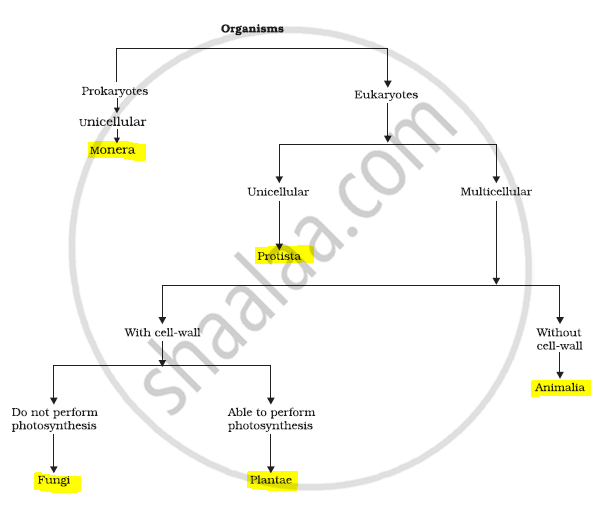Advertisements
Advertisements
प्रश्न
Explain the basis for grouping organisms into five kingdoms.
उत्तर
R.H. Whittaker proposed a five kingdom classification of living organisms on the basis of Linnaeus’ system of classification. The five kingdoms proposed by Whittaker are Monera, Protista, Fungi, Plantae, and Animalia.
The basis for grouping organisms into five kingdoms is as follows:
(i) On the basis of the presence or absence of membrane-bound organelles, all living organisms are divided into two broad categories of eukaryotes and prokaryotes. This division lead to the formation of kingdom Monera, which includes all prokaryotes.
(ii) Then, eukaryotes are divided as unicellular and multicellular, on the basis of cellularity. Unicellular eukaryotes form kingdom Protista, and multicellular eukaryotes form kingdom Fungi, Plantae, and Animalia.
(iii) Animals are then separated on the basis of the absence of a cell wall.
(iv) Since fungi and plants both contain a cell wall, they are separated into different kingdoms on the basis of their modes of nutrition. Fungi have saprophytic mode of nutrition, whereas plants have autotrophic mode of nutrition. This results in the formation of the five kingdoms.

APPEARS IN
संबंधित प्रश्न
In which kingdom will you place an organism which is single-celled, eukaryotic and photosynthetic?
Tick (✓) the appropriate answer :
Unicellular organisms with a proper nucleus are known as :
Give distinguishing features of plants and animals.
Write a note on lichens.
Which living organisms are included in the kingdom monera?
Who am I?
I live on decaying organic matter.
Draw a neat and labelled diagram.
Paramoecium
Given below is an animal followed by three terms or features. Underline the term which does not match with the animal.
Hydra - Invertebrata, Cnidaria, Crustacea
Who proposed the five kingdom system of classification and when?
The five kingdom classification was proposed by ______.
